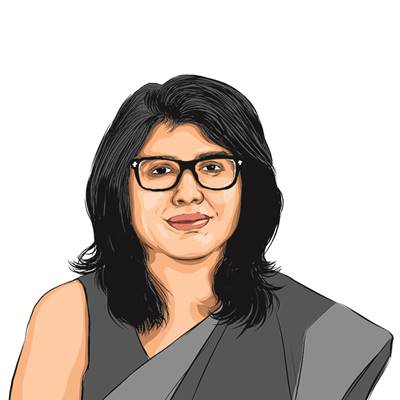Opinion That we can repair ourselves makes us all teachers
We are our closest but most difficult students
 If repair, like prayer, is available to everyone, creativity is, too. That we can repair ourselves makes us all teachers — we are our closest but most difficult students.
If repair, like prayer, is available to everyone, creativity is, too. That we can repair ourselves makes us all teachers — we are our closest but most difficult students. The pen that finds its life from human fingers feeding ink into its body is different from the pen whose intestines are consumed, used and discarded. That relationship, of keeping and throwing, can be seen in their forms, in the difference between the body — and skin — of the fountain pen and a biro. One looks for a button to match the rest on the shirt when it gets lost. That effort, along with the enterprise of sewing, makes the shirt a little more valued than it might have been before. And so with relationships between humans. Repair, with its rituals of attention, renews affection — the old becomes temporarily new. Repairing requires skills — of the hands, but, more importantly, of the mind, for it to return over and over again to the same place of tear, injury and incompletion; it is also a gesture towards a renewal of commitment, to carry along with what has been given instead of raising a ticket for a new purchase. Repair, then, is a form of updating.
That any form of art is a practice of repair is so self-evident that neither teacher nor student need to say it to each other. Riyaz is repair, and it’s possible for this repairing to happen without the obvious corollary — our art is only a synecdoche of our condition, that we too are in need of gentle repair. How this rifu (or rafu), this mending of cloth through stitches, that happens in our art makes us the artists we are, is only an extension of how we are constantly repairing ourselves. That creation is actually repair doesn’t occur to us because of our conditioning in stories of origin and anthems about originality. The “and” in the Bible is much more than a conjunction, for instance — it reminds us that all creative practice begins with “and”, in the middle, from the middle, but, more importantly, it is a reminder that creation is restoration, an unpredictable balance of scraping and adding, sawing and joining, loss and gain: The “and” is the manifestation of an urge to stay connected to what was, and to continue. This form of repair is like the self and the world that, while remaining in flux, continues to retain an essence of its identifiability.
It’s with brokenness that one comes to poetry. Think of the vocabulary, the violence in “cutting” lines, line “breaks” or “run on lines”, in which is the phonetic intuition of being “run over”. But enjambment is neither surgery nor recuperation — it is a gardener’s trick to allow the plant to grow more fluently. “Repair” comes from an etymological history of preparation, a line of living that connects the empirical with the spiritual, the functional with the aesthetic.
It has begun to seem to me that much of the idea of the Creative Writing workshop comes from the idea of repair. We must fix the writing. The workshop begins to feel like a garage — a space that provides the equivalent of a spare tyre, a painting job, and so on. I’d have given up on the analogy had it really not been as true — the writing must approximate a model, something as ready-made as an automobile. We’ve been bullied to believe in a preset idea of an efficient model — what we write must fit into that mould. Irrespective of the approach one takes — to demonstrate one’s unease with the writer’s style or suggesting ways in which the writing could be made more efficient — the idea of language needing repair is made obvious. It is a hurtful model of critique and pedagogy. This becomes even more complicated when we come to an Indian Creative Writing workshop where there are different degrees of language fluency.
But craft is not a skill alone. If it were, it would have remained tied to techne, the Greek word for craft, a concept that emphasises expertise. The more we are able to move away from this idea of craft, the easier it would be to liberate it from this capitalist model of training in creative practice that funds workshops and university programmes. Repair — as concept and practice — is far more equitable and democratic than the bullish investment in craft, whose industrialisation and consequent marketing has turned writers into the likeness of fortune cookies, with something stored inside them as ready-made response, no matter who bites into it.
If repair, like prayer, is available to everyone, creativity is, too. That we can repair ourselves makes us all teachers — we are our closest but most difficult students.
Roy, a poet and writer, is associate professor at Ashoka University.
Views are personal





